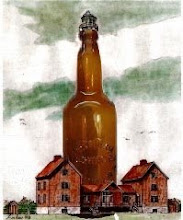 In spite of several unfavorable transactions with major brewing companies, Celis is widely considered one of the forbearers of the craft-brewing movement in America. His self-named brewery operated in Austin from the mid-1990s to 2001. He was also the founder of Hoegaarden beer.
In spite of several unfavorable transactions with major brewing companies, Celis is widely considered one of the forbearers of the craft-brewing movement in America. His self-named brewery operated in Austin from the mid-1990s to 2001. He was also the founder of Hoegaarden beer.But he was just getting started. In 1987, a fire gutted the Hoegaarden brewery. Celis, who had no insurance, took loans from other breweries, the largest of which, Artois (as in, Stella Artois) ended up with a share in the business. After Artois was sold to EnBev, Celis faced pressure to make his beer more marketable. Instead of caving, he sold the brewery altogether and moved his operations to Austin, Texas, where, it's said, he was drawn by the water quality in the Edwards Aquifer.
By the mid-1990s he was again brewing wheat beer in the style famous to Hoegaarden, now called Celis Beer, and making a name for himself as one of the early leaders of the American craft beer movement. And yet again, his investors went corporate on him, selling their shares to major conglomerates. In 2000, Miller bought the company from Celis, closed the brewery, and then sold the brand name to Michigan Brewing Company.
Celis Beer was relaunched a few years later, but it was no longer brewed in Texas, and most likely, no longer brewed according to Pierre's original recipe.
Though Celis split his time between Austin and Belgium, his daughter Christine had managed most of the brewery's day-to-day operations until the buyout. Pierre continued brewing witbier in Belgium according to his original recipe for Hoegaarden up until recently, even visiting 512 brewery in Austin three years ago, according to the Alamo Drafthouse blog.


